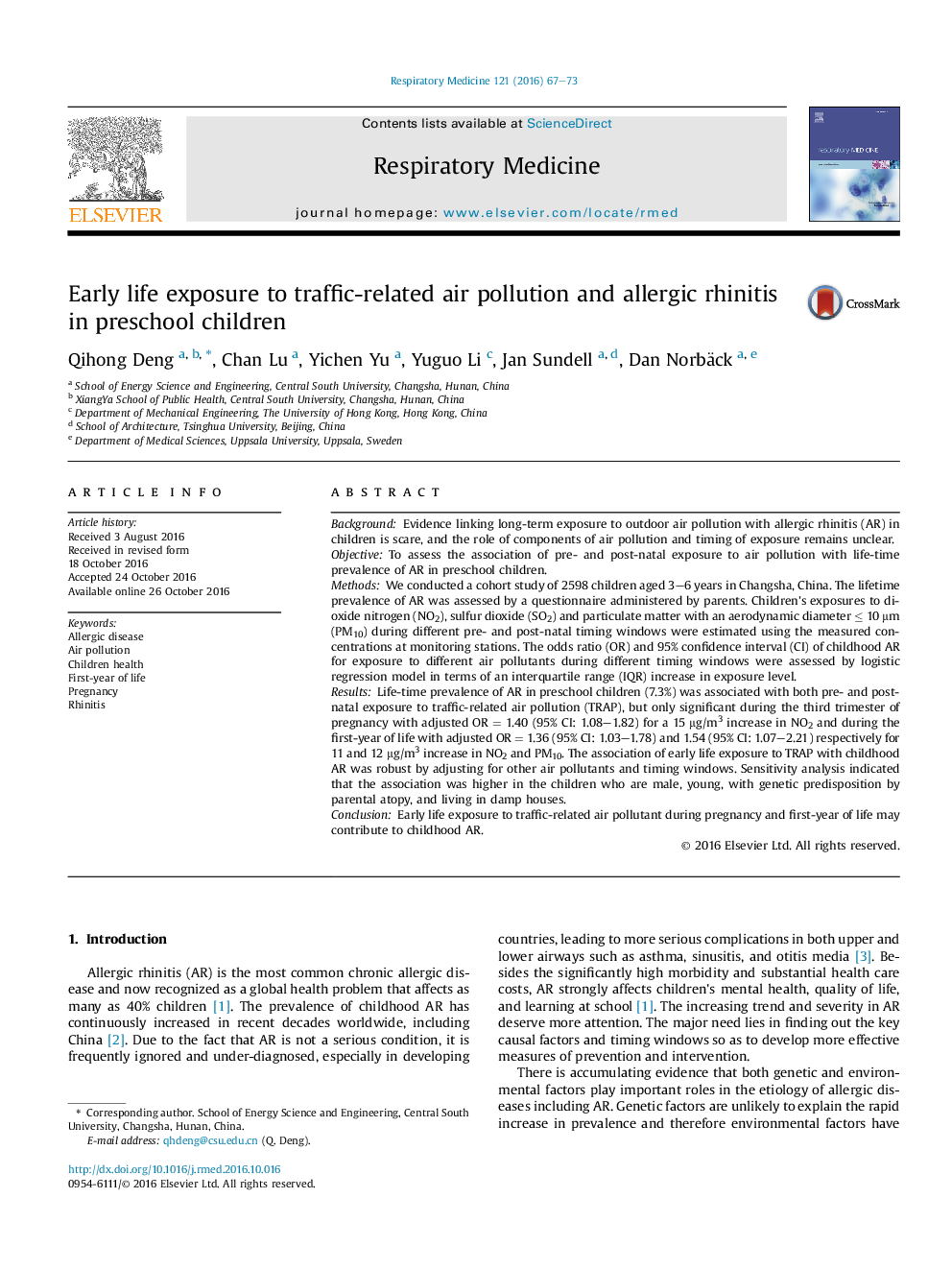| Article ID | Journal | Published Year | Pages | File Type |
|---|---|---|---|---|
| 5725027 | Respiratory Medicine | 2016 | 7 Pages |
â¢Long-term effect of outdoor air pollution on childhood allergic rhinitis (AR) is lacking.â¢Both pre- and post-natal exposures to air pollution were associated with childhood AR.â¢We identified critical windows of exposure and components of air pollution in AR development.â¢Early life exposure to traffic-related air pollution (TRAP) is associated with childhood AR.â¢TRAP exposure during pregnancy and the first year of life may cause AR in preschool children.
BackgroundEvidence linking long-term exposure to outdoor air pollution with allergic rhinitis (AR) in children is scare, and the role of components of air pollution and timing of exposure remains unclear.ObjectiveTo assess the association of pre- and post-natal exposure to air pollution with life-time prevalence of AR in preschool children.MethodsWe conducted a cohort study of 2598 children aged 3-6 years in Changsha, China. The lifetime prevalence of AR was assessed by a questionnaire administered by parents. Children's exposures to dioxide nitrogen (NO2), sulfur dioxide (SO2) and particulate matter with an aerodynamic diameter â¤Â 10 μm (PM10) during different pre- and post-natal timing windows were estimated using the measured concentrations at monitoring stations. The odds ratio (OR) and 95% confidence interval (CI) of childhood AR for exposure to different air pollutants during different timing windows were assessed by logistic regression model in terms of an interquartile range (IQR) increase in exposure level.ResultsLife-time prevalence of AR in preschool children (7.3%) was associated with both pre- and post-natal exposure to traffic-related air pollution (TRAP), but only significant during the third trimester of pregnancy with adjusted OR = 1.40 (95% CI: 1.08-1.82) for a 15 μg/m3 increase in NO2 and during the first-year of life with adjusted OR = 1.36 (95% CI: 1.03-1.78) and 1.54 (95% CI: 1.07-2.21) respectively for 11 and 12 μg/m3 increase in NO2 and PM10. The association of early life exposure to TRAP with childhood AR was robust by adjusting for other air pollutants and timing windows. Sensitivity analysis indicated that the association was higher in the children who are male, young, with genetic predisposition by parental atopy, and living in damp houses.ConclusionEarly life exposure to traffic-related air pollutant during pregnancy and first-year of life may contribute to childhood AR.
Graphical abstractDownload high-res image (228KB)Download full-size image
